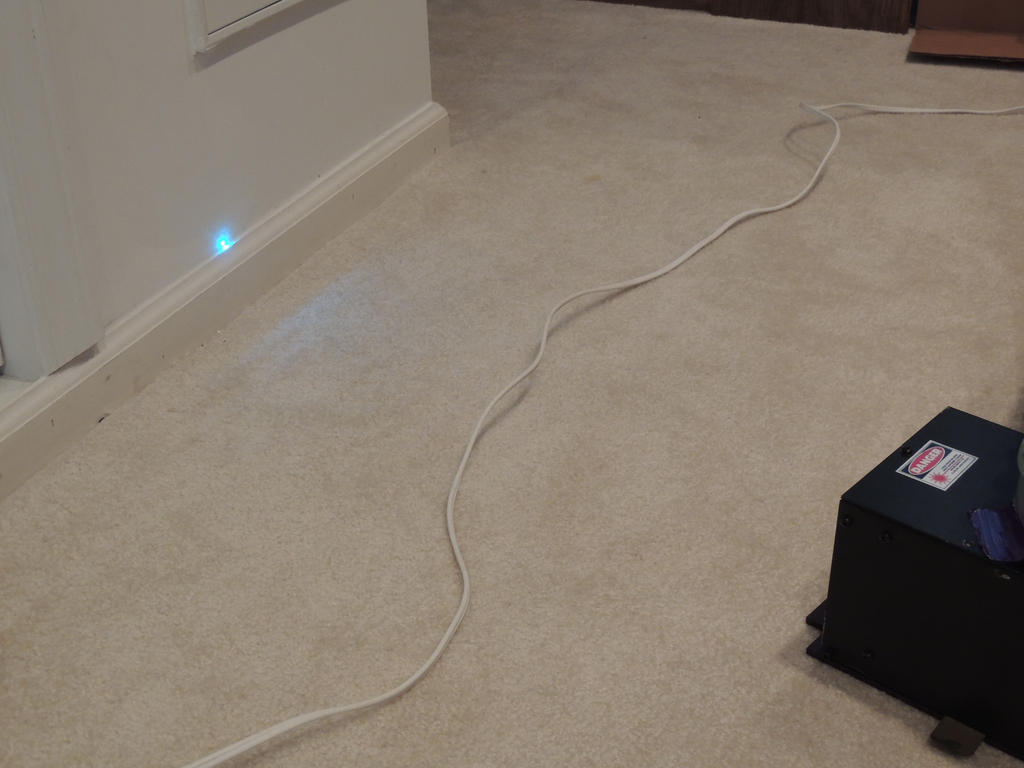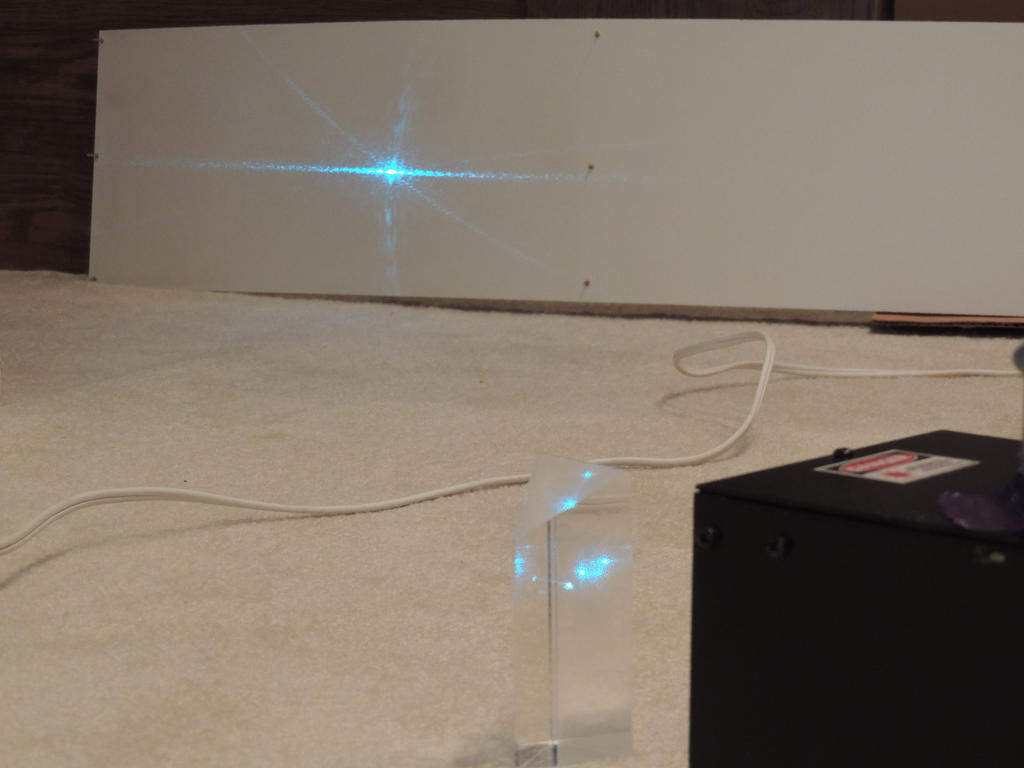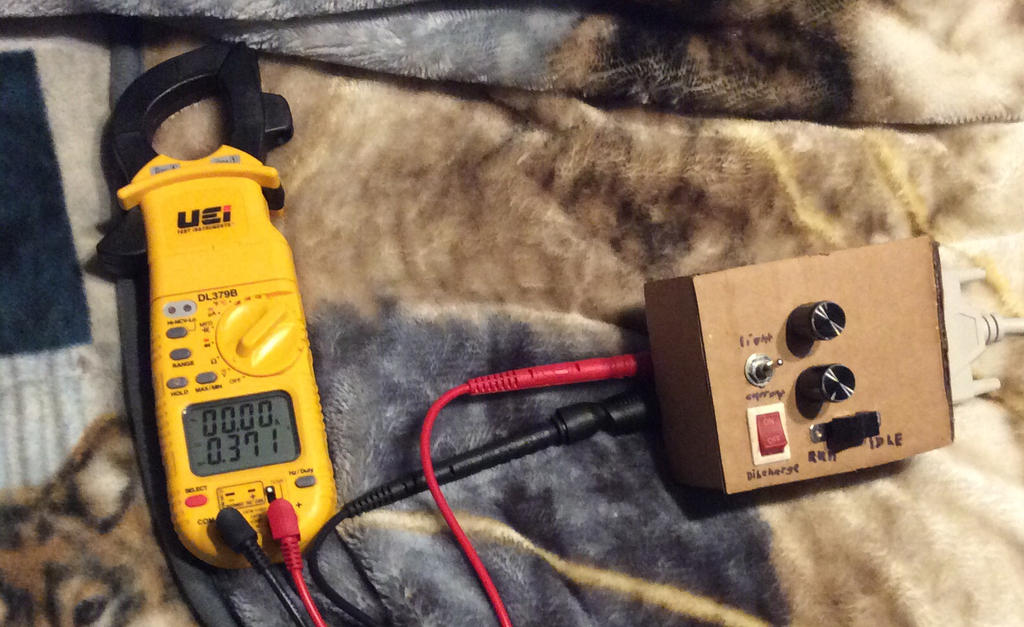D
Deleted member 54069
Guest
This may be a double post, but I dont care at the moment.
It works!


This is the fan that I am using to cool the laser, and how its connected to the laser head. It works well, moves a lot of air,
keeps the laser cool enough (I think), and the discharge air temperatures average about 94F.
:origin()/pre00/9561/th/pre/i/2017/257/7/2/untitled_by_timberwolf224-dbnf2tv.jpg)
:origin()/pre00/2cce/th/pre/i/2017/257/6/d/cooler_by_timberwolf224-dbne9qk.jpg)
The jumpers on the PSU. (pliers on the floor are unrelated, don't worry.)
:origin()/pre00/321a/th/pre/i/2017/257/4/b/untitled_by_timberwolf224-dbnf2t1.jpg)
The PS arrived at about 10:40 this morning. I set to work rebuilding the 240V adapter box that I have previously used, and at about noon everything was set up. Shortly after, I turned it on, and got nothing. I read the documentation again, and realized I had forgotten to connect the discharge enable jumper. A short correction later, and I switched it on, and it worked. It actually started on the first attempt. The tube idle current is about 4 amps. Forgot to measure the output power connection, I may edit this later. I took a gamble with this laser (and its power supply), and I think its safe to say, it paid off. I was not going to give up on this laser easily, and I am very happy that I didnt.
Not bad for a first hobby level laser, eh?
(Edits: formatting.)
It works!


This is the fan that I am using to cool the laser, and how its connected to the laser head. It works well, moves a lot of air,
keeps the laser cool enough (I think), and the discharge air temperatures average about 94F.
:origin()/pre00/9561/th/pre/i/2017/257/7/2/untitled_by_timberwolf224-dbnf2tv.jpg)
:origin()/pre00/2cce/th/pre/i/2017/257/6/d/cooler_by_timberwolf224-dbne9qk.jpg)
The jumpers on the PSU. (pliers on the floor are unrelated, don't worry.)
:origin()/pre00/321a/th/pre/i/2017/257/4/b/untitled_by_timberwolf224-dbnf2t1.jpg)
The PS arrived at about 10:40 this morning. I set to work rebuilding the 240V adapter box that I have previously used, and at about noon everything was set up. Shortly after, I turned it on, and got nothing. I read the documentation again, and realized I had forgotten to connect the discharge enable jumper. A short correction later, and I switched it on, and it worked. It actually started on the first attempt. The tube idle current is about 4 amps. Forgot to measure the output power connection, I may edit this later. I took a gamble with this laser (and its power supply), and I think its safe to say, it paid off. I was not going to give up on this laser easily, and I am very happy that I didnt.
Not bad for a first hobby level laser, eh?
(Edits: formatting.)
Last edited by a moderator:




